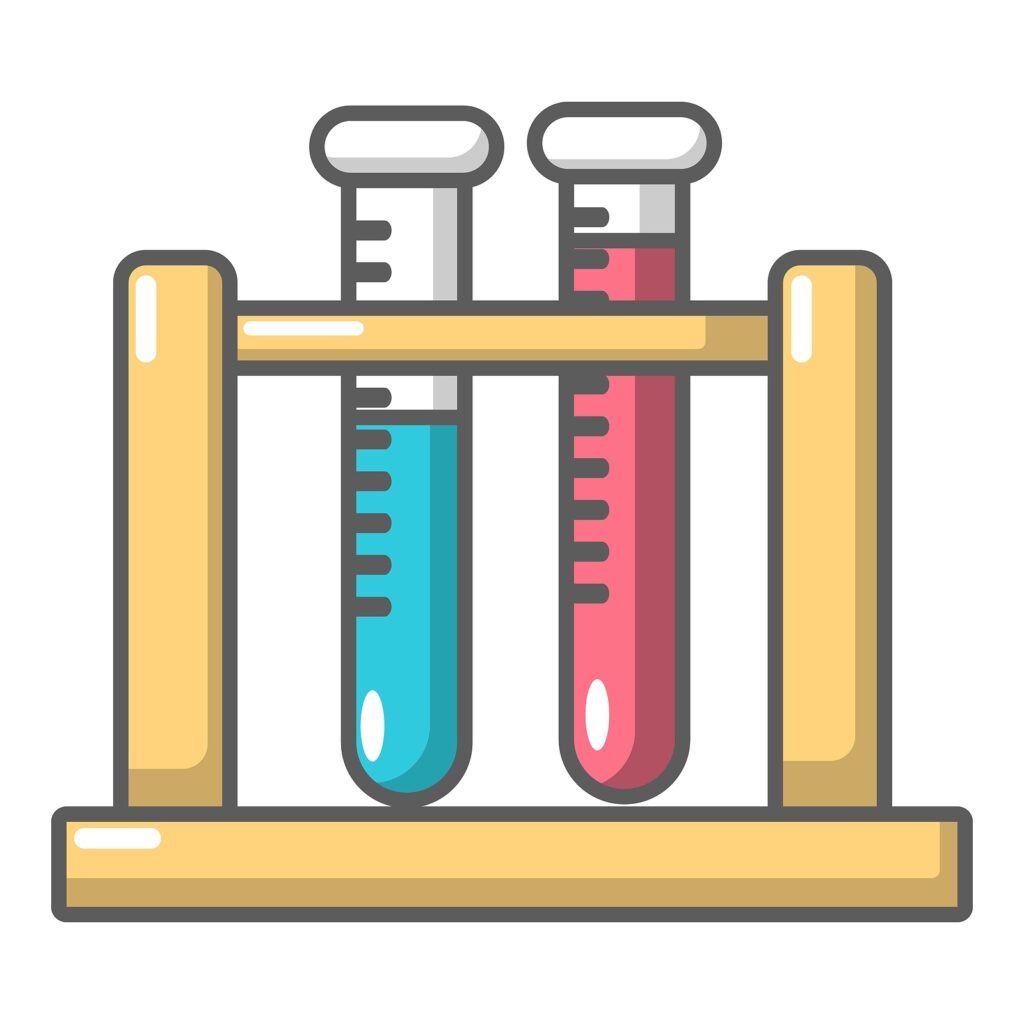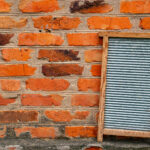Test tubes have always fascinated me, not just as an integral part of scientific experiments and chemistry labs but also as versatile tools for home-based projects. The key to safe and precise handling of test tubes lies in having a dependable test tube holder. That's why I embarked on a DIY adventure to create my very own test tube holder, and I want to share the step-by-step guide with you.
Whether you share my passion for science, you're a homeschooling parent seeking engaging hands-on projects, or you simply enjoy the satisfaction of crafting things yourself, this article is for you. Join me on this journey as we explore the world of DIY test tube holders, right from the comfort of your own home.
The Importance of a DIY Test Tube Holder
Before delving into the intricacies of crafting your DIY test tube holder, it's crucial to grasp the importance of having one at your disposal.
Prioritizing Safety: Shielding Yourself and Your Workspace
Using test tubes without a proper holder poses significant safety risks. These glass containers can vary in temperature, ranging from scorching hot to freezing cold, and the substances contained within them may be potentially dangerous.
A test tube holder offers a secure grip, diminishing the chances of accidents and chemical spills. By fashioning your own DIY test tube holder, you not only enhance your personal safety but also safeguard your workspace against potential harm.
Elevating Precision in Measurement and Observation
In the realm of scientific experimentation and observation, precision reigns supreme. A test tube holder guarantees that you can manipulate the tube with utmost accuracy, a critical aspect of obtaining reliable and precise results. Maintaining a stable grasp on your test tube is the linchpin to achieving consistent and replicable outcomes in your scientific endeavors.
Embracing Versatility in Utilization
One of the most significant advantages of DIY test tube holders lies in their adaptability. You have the freedom to tailor them to accommodate various sizes of test tubes, rendering them suitable for a wide spectrum of experiments and projects. This eliminates the necessity to procure multiple holders for diverse applications, saving you both time and money in the process.
Materials Needed for Your DIY Test Tube Holder
Before you embark on creating your own DIY test tube holder, it's essential to assemble all the materials you'll need for the project. Here's a detailed list of the items you should have at your disposal:
- Wooden Dowel: The primary building block of your DIY test tube holder is a wooden dowel. It should be of sufficient length to comfortably hold in one hand and wide enough to establish a stable grip on the test tube.
- Saw: A saw is a fundamental tool required for cutting the wooden dowel to your desired length. Ensuring that the cut edges are straight and even is essential for the functionality of your holder.
- Sandpaper: Sandpaper plays a crucial role in the project by enabling you to smooth out the edges of the wooden dowel. This step is vital for creating a comfortable and secure grip.
- Wood Glue: Wood glue comes in handy if you plan to add any customized features or additional parts to your test tube holder. It's the adhesive that will ensure these modifications stay firmly in place.
- Rubber Bands: While not mandatory, rubber bands can offer an extra layer of security when holding the test tube, especially if you're working with fragile or delicate tubes. These bands can prevent accidental slips and mishaps during experiments.

Step-by-Step Guide to Crafting Your DIY Test Tube Holder
Step 1: Measure and Cut the Wooden Dowel
To begin creating your DIY test tube holder, first, determine the length you want it to be. Generally, a length of 6 to 8 inches works well for standard test tubes. Measure and mark the desired length on the wooden dowel.
Using a saw, carefully cut the wooden dowel along the marked line. Ensure that your cuts are precise, resulting in straight and even edges for a polished final product.
Step 2: Sand the Edges for a Smooth Finish
Once you have cut the wooden dowel to size, it's time to create a comfortable and safe grip. Sanding the edges is a critical step in achieving this. Use sandpaper to gently sand the edges of the dowel, paying close attention to any rough or sharp areas. This smoothing process not only enhances the appearance but also ensures that handling the holder is safe and comfortable.
Step 3: Customizing Your Holder (Optional)
At this stage, you have the option to add extra features to your DIY test tube holder. Consider carving a small groove or slot near one end of the holder to securely cradle the test tube. If you wish to attach any additional parts or features, like a clamp or rubber padding, now is the time to do so. Use wood glue or other appropriate adhesives to secure these elements in place.
Step 4: Test the Grip
Before proceeding further, it's crucial to test the grip of your DIY test tube holder. Place a test tube in the holder to ensure that it comfortably and securely holds the tube without any risk of slipping or dropping. A secure grip is fundamental for the safety and precision of your experiments, so make any necessary adjustments if needed.
Step 5: Enhance the Grip with Rubber Bands (Optional)
For an added layer of grip security, you can choose to wrap rubber bands around the gripping area of your test tube holder. This simple addition can provide extra stability when holding the test tube, especially when working with particularly fragile or slippery tubes. Consider using different sizes or layers of rubber bands to adjust the grip according to your specific needs.
Customizing Your DIY Test Tube Holder for Specialized Needs
Your DIY test tube holder can be further customized to cater to specialized requirements in your experiments. Here are some ideas for customization:
Non-slip Coating
To enhance grip further, you can add a non-slip coating to the gripping area. This can be achieved by applying a layer of rubber or silicone for additional traction.
Multiple Slots
If you frequently work with multiple test tubes simultaneously, consider customizing your holder with multiple slots or grooves. This feature will allow you to securely hold multiple tubes at once, streamlining your experiments.
Color Coding
For organizational purposes, you can color-code your DIY test tube holder by painting or using colored tape. This can help you quickly identify the specific test tubes you need for different experiments.
Tips for the Effective Use of Your DIY Test Tube Holder
Congratulations on successfully crafting your DIY test tube holder! To maximize its utility and ensure safe and effective use, here are some additional tips and information:
Materials Matter
Consider the material you used to make your DIY test tube holder. Wood, plastic, and metal are common choices. Each material has its strengths and weaknesses. For instance, wood is lightweight but may require more frequent maintenance compared to metal. Choose the material that best suits your needs and experiments.
Customization for Versatility
Depending on your scientific pursuits, you can customize your DIY test tube holder. Add adjustable clasps or slots to accommodate test tubes of various sizes. This versatility can save you time and effort when handling different experiments.
Regular Maintenance
Even well-constructed DIY test tube holders require regular maintenance. Check for any signs of wear and tear, such as loose screws or weakened grips, and repair them promptly. Proper maintenance prolongs the lifespan of your holder.
Safety Precautions
Always prioritize safety when working with test tubes and other laboratory equipment. In addition to wearing gloves and safety gear, be mindful of the substances you're handling. Familiarize yourself with the Material Safety Data Sheets (MSDS) for any chemicals used in your experiments. Proper ventilation and a designated workspace are also crucial for safety.
Multiple Holders for Efficiency
Consider creating multiple DIY test tube holders for simultaneous experiments. This can streamline your work, allowing you to work more efficiently, especially when conducting comparisons or replicating results comment link to.
Enhance Grip with Liners
To improve the grip of your test tube holder, you can add rubber or foam liners to the gripping surfaces. This added friction can help prevent accidental slips and ensure a secure hold, especially when working with delicate or slippery test tubes.
Share Your Design
If you've designed a particularly effective DIY test tube holder, consider sharing your design with the scientific community. Websites and forums dedicated to DIY lab equipment can be great platforms for sharing your innovations and receiving feedback from fellow enthusiasts sites link to comment share on other sites link.

Maintaining Your DIY Test Tube Holder
A DIY test tube holder is a valuable tool for various laboratory and experimental tasks. Proper maintenance is essential to maximize its lifespan and ensure it continues to function effectively over time. Here's an in-depth guide to maintaining your DIY test tube holder:
Regular Cleaning: After every use, it's crucial to clean your test tube holder thoroughly. Remove any residues or chemicals that may have come into contact with it during experiments. Use a damp cloth and mild soap if necessary to remove stubborn stains. After cleaning, ensure it is completely dry before storing it.
Detailed Inspection: Periodically inspect your test tube holder for signs of wear, damage, or deterioration. Pay close attention to the following areas:
- Check for cracks or splintering in the wood.
- Examine the joints and connections for looseness or weakness.
- Inspect any decorative elements for chipping or fading.
Maintenance of Decorations: If your DIY test tube holder features decorative elements, such as paint, consider performing touch-ups when needed. This will not only maintain its aesthetic appeal but also protect the wood underneath from potential damage.
Proper Storage: Storing your test tube holder correctly is vital to prevent warping or fading of the wood. Follow these storage guidelines:
- Store it in a dry environment to prevent moisture-related damage.
- Avoid direct exposure to sunlight, as prolonged UV exposure can lead to fading and weakening of the wood.
- Keep it away from extreme temperatures, as fluctuations in temperature can cause the wood to expand and contract, potentially leading to warping or cracking.
Frequently Asked Questions (FAQs)
Q1: What are the benefits of making my DIY test tube holder instead of buying one?
A1: Making your DIY test tube holder allows you to customize it to your specific needs and experiment requirements. It's also a cost-effective option, and you can create a holder that fits various test tube sizes, eliminating the need to purchase multiple holders.
Q2: What factors should I consider when determining the ideal length for a DIY test tube holder?
A2: When determining the ideal length for a DIY test tube holder, several factors come into play. Generally, the optimal length falls in the range of 6-8 inches. This size provides a comfortable grip and stability when handling test tubes. However, you should also consider the number of test tubes you plan to hold simultaneously and the available workspace. If you frequently work with multiple test tubes at once, a slightly longer holder may be more practical.
Q3: What additional safety precautions should I keep in mind when using a DIY test tube holder?
A3: Safety is of utmost importance when handling test tubes. Beyond wearing gloves and safety goggles, especially when dealing with potentially hazardous substances, there are other precautions to consider. Ensure that the test tube holder's grip is secure to prevent accidental drops. Additionally, be mindful of the surrounding environment, such as flammable materials or open flames, as they can pose risks when working with test tubes.
Q4: Are there specific wood types I should avoid when making a DIY test tube holder?
A4: While various types of wood can be used to craft a DIY test tube holder, it's crucial to select wood that is both sturdy and resistant to wear. Hardwoods like oak or maple are excellent choices due to their stability and durability. Avoid using softwoods like pine, as they may not withstand repeated use and could splinter or break over time.
Q5: What are some creative ways to customize a DIY test tube holder for different test tube sizes?
A5: Customizing your DIY test tube holder for various test tube sizes offers versatility in your laboratory work. You can create holders with different-sized gripping areas, using adjustable mechanisms or interchangeable inserts to securely accommodate test tubes of varying diameters. Additionally, consider labeling or color-coding your holders to easily identify which one is suitable for a specific test tube size, enhancing efficiency and organization in your workspace.
Q6: What should I do if my DIY test tube holder becomes damaged or worn out?
A6: If your DIY test tube holder becomes damaged or worn over time, it's a good idea to replace it to maintain safety and precision in your experiments. You can follow the same steps to create a new one or make any necessary repairs.
Q7: Are there any additional accessories I can add to my DIY test tube holder for extra functionality?
A7: Yes, you can add accessories like rubber bands or grooves to enhance the grip and stability of your DIY test tube holder. These modifications can be especially useful when working with test tubes that are particularly delicate or slippery.
Q8: Can I use my DIY test tube holder for applications outside of the laboratory?
A8: Certainly! Your DIY test tube holder can be versatile and used in various applications, including educational projects, arts and crafts, or even as a unique decorative item. It's not limited to laboratory use alone.
Q9: Is this DIY project suitable for beginners with limited woodworking experience?
A9: Yes, this DIY project is relatively straightforward and can be undertaken by beginners with basic woodworking skills. The materials and steps involved are relatively simple, making it an accessible project for most people.
Q10: Are there any alternative materials I can use if I don't have access to a wooden dowel?
A10: While a wooden dowel is the most common material used for DIY test tube holders, you can explore alternatives like PVC pipes or even sturdy plastic rods if you don't have access to wood. However, ensure that the material you choose is safe for your intended use.
Conclusion
Creating your DIY test tube holder is not only a practical endeavor but also a cost-effective way to enhance your experiments and projects. By following the detailed steps outlined in this comprehensive guide and customizing your holder to your specific requirements, you can ensure safety, precision, and versatility in your laboratory or home-based activities.
Remember that safety should always be your top priority when working with test tubes or any chemicals. With your DIY test tube holder in hand, you can conduct experiments and projects with confidence, knowing that you have a reliable tool at your disposal.
So, why wait? Gather your materials, follow the detailed steps, and embark on crafting your DIY test tube holder today. It's a rewarding project that will serve you well in your scientific pursuits.
Sources
https://sg.vwr.com/store/product/7596718/test-tube-holder




